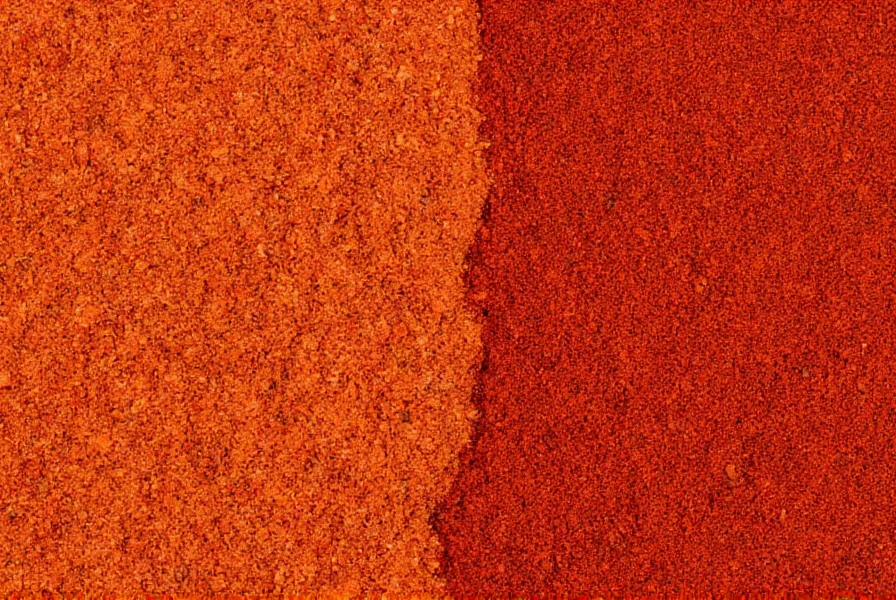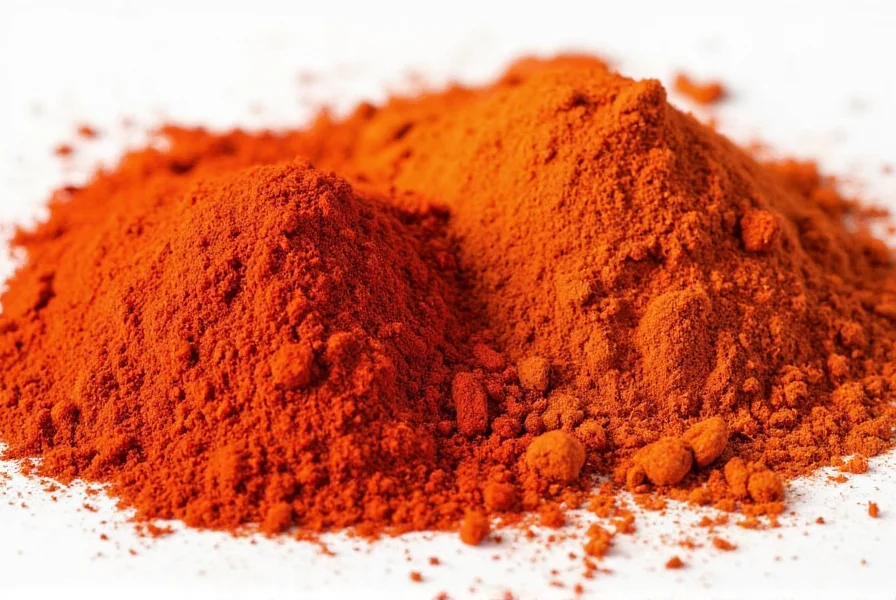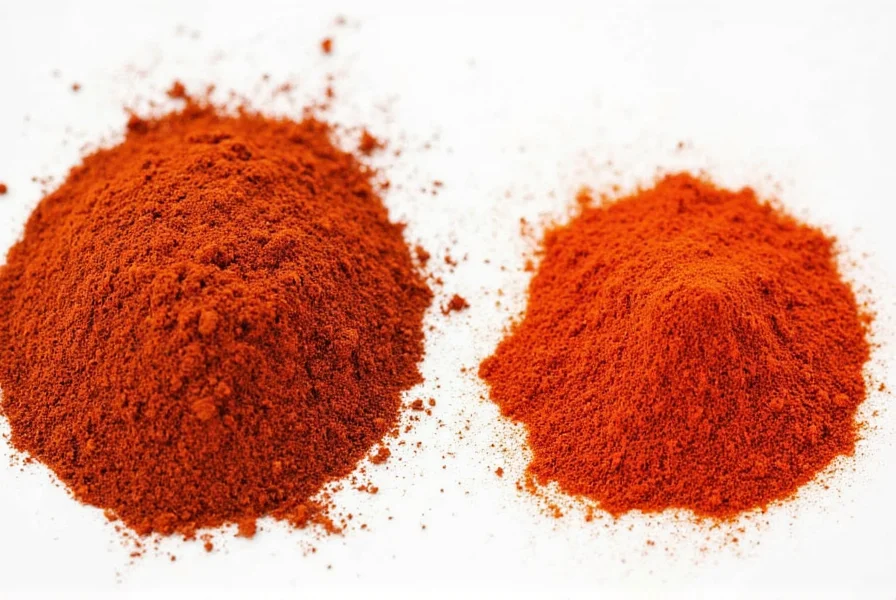No, chili powder and cayenne are not the same. Chili powder is typically a blend of ground dried chilies and other spices like cumin and garlic, while cayenne refers specifically to ground dried cayenne peppers. Cayenne is significantly hotter than standard chili powder, with cayenne measuring 30,000-50,000 Scoville Heat Units (SHU) compared to chili powder's 500-1,500 SHU.
Understanding the difference between chili powder and cayenne is essential for home cooks who want to achieve authentic flavors without accidentally creating an inedibly spicy dish. Many grocery stores place these two ingredients side by side in the spice aisle, contributing to the common confusion about whether is chili powder the same as cayenne. This article will clarify the distinctions, help you understand when to use each, and provide practical substitution guidance.
What Exactly Is Chili Powder?
Chili powder found on supermarket shelves is rarely just ground chilies. In the United States, commercial chili powder is typically a spice blend containing:
- Ground dried chilies (often a mix of ancho, cayenne, and others)
- Ground cumin
- Garlic powder
- Onion powder
- Oregano
- Salt (in some blends)
The specific composition varies by brand, which explains why chili powder ingredients can differ significantly between products. This blend was developed to create the characteristic flavor of chili con carne without requiring home cooks to source multiple individual spices.

Understanding Cayenne Pepper
Cayenne refers specifically to ground dried cayenne peppers, which are slender, bright red chili peppers belonging to the Capsicum annuum species. Unlike chili powder, pure cayenne contains only one ingredient: ground cayenne peppers.
Cayenne peppers measure between 30,000-50,000 Scoville Heat Units, placing them firmly in the hot category of the chili pepper scale. For reference, jalapeños range from 2,500-8,000 SHU, while bell peppers register at 0 SHU.
Heat Level Comparison: Chili Powder vs Cayenne
| Spice | Scoville Heat Units | Relative Heat Level | Flavor Profile |
|---|---|---|---|
| Standard Chili Powder | 500-1,500 SHU | Mild | Earthy, slightly sweet, complex with warm spices |
| Cayenne Pepper | 30,000-50,000 SHU | Very Hot | Sharp, pungent, straightforward heat |
| Pure Ground Ancho (common in chili powder) | 1,000-2,000 SHU | Mild | Fruity, raisin-like, mild heat |
Why People Confuse Chili Powder and Cayenne
Several factors contribute to the common misconception that is cayenne pepper the same as chili powder:
- Color similarity - Both appear as vibrant red powders
- Ingredient overlap - Many chili powder blends contain some cayenne
- Labeling confusion - Some international products label pure ground chilies as "chili powder"
- Regional differences - In the UK and some Commonwealth countries, "chilli powder" often refers to pure ground chilies
Substitution Guide: When and How to Swap
Understanding the difference between chili powder and cayenne is crucial when substituting one for the other. Because of the significant heat difference, substitutions require careful measurement:
- Substituting cayenne for chili powder: Use 1/8 to 1/4 teaspoon cayenne for every 1 tablespoon chili powder. Add separately from other spices to control heat.
- Substituting chili powder for cayenne: Use 1-2 tablespoons chili powder for every 1/4 teaspoon cayenne, but recognize you'll also be adding other flavors (cumin, garlic, etc.).
When asking can I substitute cayenne for chili powder, consider your recipe's requirements. For dishes where chili powder's complex flavor profile is essential (like authentic chili con carne), substitution will alter the dish's character significantly. For recipes simply requiring heat (like some marinades), cayenne can work with careful measurement.

Practical Cooking Applications
Knowing the chili powder vs cayenne heat level difference helps you use each appropriately:
- Use chili powder when: You want the characteristic flavor of Tex-Mex dishes like chili con carne, tacos, or enchiladas. Its complex blend creates depth without overwhelming heat.
- Use cayenne when: You need pure, straightforward heat without additional flavors. Ideal for Cajun/Creole cooking, hot sauces, or when you want to boost heat in a recipe without changing flavor profile.
Professional chefs often keep both in their spice rotation for precisely this reason—they serve different culinary purposes despite their visual similarity.
Reading Spice Labels Carefully
To avoid confusion in the spice aisle, check ingredient lists:
- Products labeled "chili powder" with multiple ingredients are spice blends
- Products listing only "cayenne pepper" or "ground cayenne" contain pure cayenne
- "Hot chili powder" often contains more cayenne than standard blends
When shopping internationally, be especially cautious—what's labeled "chilli powder" in the UK is typically pure ground chilies, equivalent to what Americans would call cayenne.
Frequently Asked Questions
Can I use cayenne instead of chili powder in chili?
Yes, but with caution. Use 1/8 to 1/4 teaspoon cayenne for every 1 tablespoon of chili powder called for. Remember that cayenne provides heat without the complex flavor of traditional chili powder, so you may want to add 1/2 teaspoon cumin and a pinch of garlic powder to compensate for the missing flavor components.
Which is hotter: cayenne or chili powder?
Cayenne is significantly hotter than standard chili powder. Pure cayenne measures 30,000-50,000 Scoville Heat Units, while typical chili powder blends measure only 500-1,500 SHU. This means cayenne is approximately 20-100 times hotter than standard chili powder.
What's the difference between cayenne pepper and red pepper flakes?
Cayenne pepper is a fine powder made from ground dried cayenne peppers, while red pepper flakes are coarsely crushed dried chilies (often a mix of cayenne and other hot peppers). Cayenne provides more consistent heat distribution, while red pepper flakes offer texture and visible spice bits. One teaspoon of cayenne generally equals 1.5 teaspoons of red pepper flakes in heat intensity.
Is paprika the same as chili powder?
No, paprika and chili powder are different. Paprika is made from ground sweet or mild peppers and has little to no heat (0-500 SHU), while chili powder is a blend that includes hotter peppers and other spices. Hungarian paprika has a distinctive flavor, while Spanish paprika (pimentón) is often smoked. Standard chili powder is significantly hotter and more complex than most paprikas.











 浙公网安备
33010002000092号
浙公网安备
33010002000092号 浙B2-20120091-4
浙B2-20120091-4